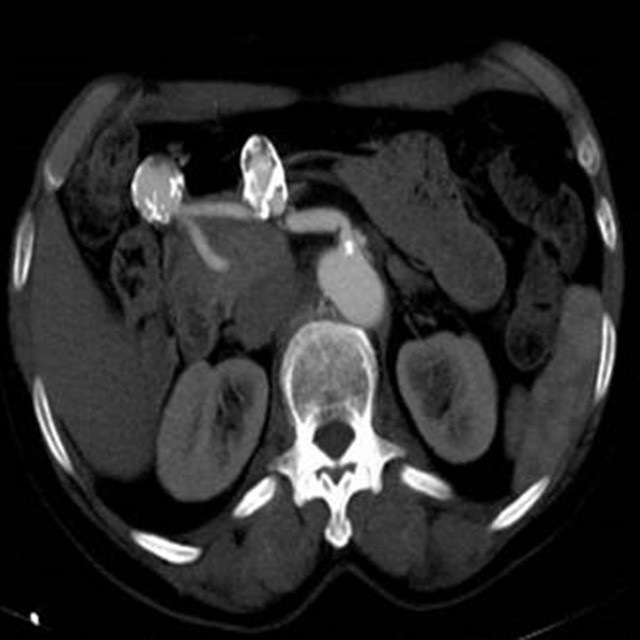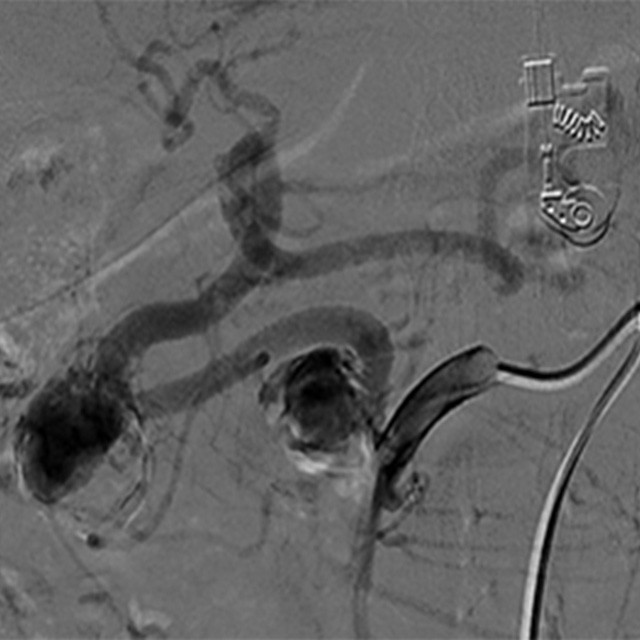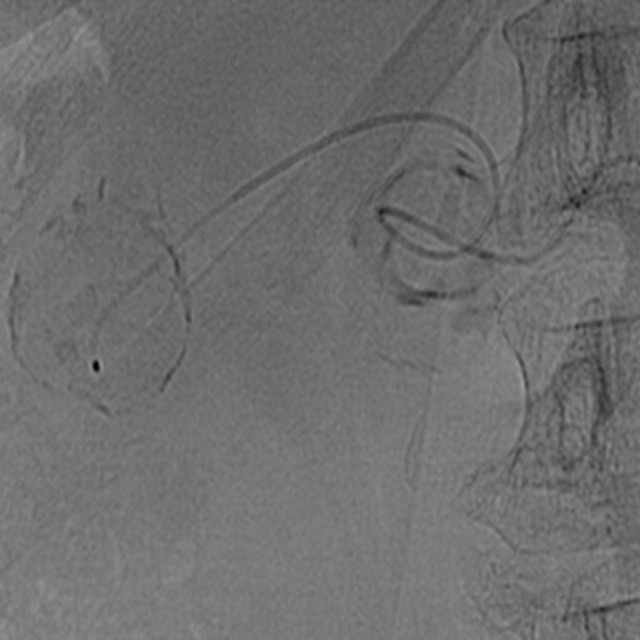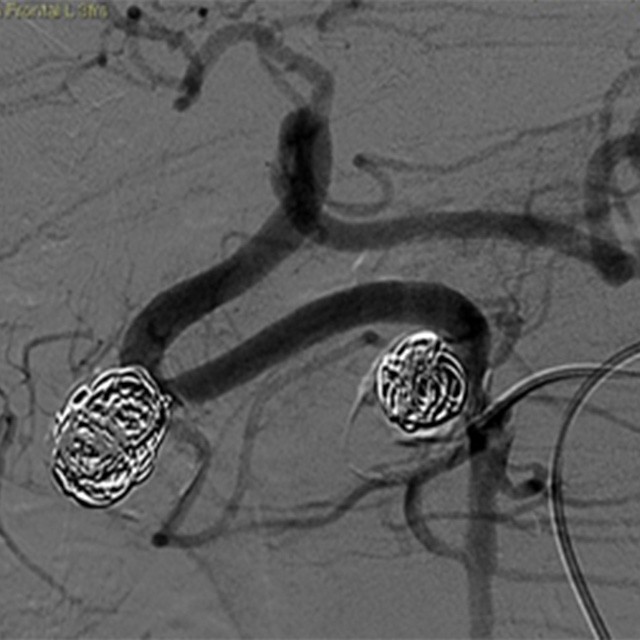Inferior Pancreaticoduodenal Artery Aneurysms Embolization

Baseline
A 77-year old woman was referred for treatment of two aneurysms (24x20mm and 20x18 mm), arising from the inferior pancreaticoduodenal artery.
The celiac artery showed chronic total occlusion.
The case was discussed with the vascular surgery team and it was decided to proceed for coiling embolization of both the aneurysms.

Procedure
A femoral approach was performed and pre-shaped microcatheters were chosen to reach the target lesions.
Many unsuccessful attempts to cannulate aneurysms were performed using before a pre-shaped 45° tip and than a 90° tip microcatheters.
After several failures, a Direxion™ 0.021" (0.53mm) Transend-14 System with pre-shaped Swan Neck tip was chosen.

Treatment
The torqueable Direxion was then successfully advanced over a Transend-14 guidewire until it reached the two aneurysms.
The microcatether Swan-Neck shaped tip was crucial to the success of the procedure because it facilitated access through this challenging anatomy.
Coil-packing technique was then performed using detachable coils to achieve a complete embolization of both aneurysms.
Dr. Marco Santoro - Interventional Radiologist - "Spirito Santo Hospital" - Pescara












